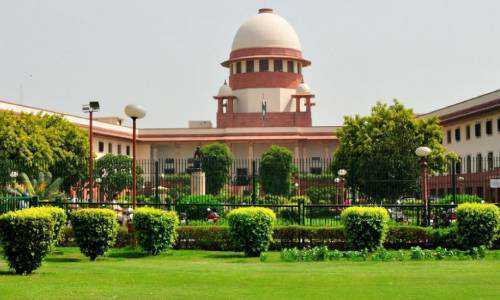
The Hon'ble Apex Court, in its ruling, overturned the NCLAT's observations that Section 14(1)(d) of the I&B Code forbade the recovery of "occupied" property and that only actual physical occupation of the property would be taken into account. This section does not refer to any rights or interests created in the property.
In the instant case titled Rajendra K. Bhutta vs. Maharashtra Housing and Area Development Authority and Anr., the issue raised for clarification before the Apex Court was:
Whether the Code's Section 14(1)(d) will apply to any occupied property that has been statutorily frozen and may have been transferred to the corporate debtor as part of a joint development arrangement?
With regard to this issue, the Supreme Court provided an affirmative response to this issue. It was decided that although Section 14(1)(d) of the Code mentions recovering "occupied" property, it only refers to the actual physical occupation of the property and not any rights or interests that have been created in the property. According to the Supreme Court, if there is a conflict between Section 238 of the Code and the Maharashtra Housing and Area Development Act, 1976, the Code must take precedence based on its clear language. It was claimed that when a moratorium is mentioned under Section 14 of the Code, the notion is that a statutory status quo is declared under Section 14 the time a petition is admitted under Section 7 of the Code in order to alleviate corporate disease. This makes it possible for the CIRP to proceed without being hampered by any of the challenges that would otherwise exist and be resolved in accordance with Section 14.
In the event of a contradiction between Section 238 of the Code and the Maharashtra Housing and Area Development Act, 1976, the Supreme Court has ruled that the Code must prevail due to its plain language. It was asserted that whenever a moratorium is specified under Section 14 of the Code, the idea is that a legal status quo is established under that section at the moment a petition is approved under Section 7 of the Code to treat corporate disease. This enables the CIRP to move on without being hindered by any issues that would typically arise and be resolved in accordance with Section 14.
It was decided that everything mentioned in Section 14 must be properly followed for this brief period at least in order to finally put the corporate debtor back on its feet.
The Court categorically stated that,
"We have seen how, in the facts of this case, we are not concerned with the assets of the corporate debtor, least of all the assets of MHADA. The limited question before us is as to whether Section 14(1)(d) of the Code will apply to statutorily freeze ‘occupation’ that may have been handed over under a Joint Development Agreement."

